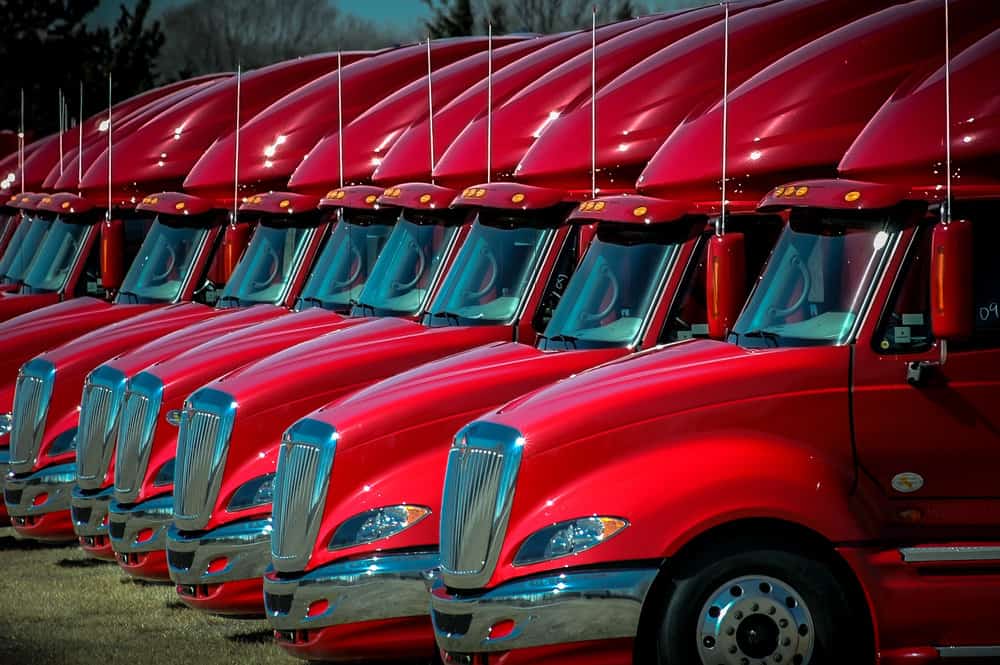
Good day,
Paul Page from the Wall Street Journal is reporting that new Class 8 truck orders for May were more than double the comparable figures from May 2017: 35,600 new trucks were ordered last month. The WSJ cited strengthening freight demand as the reason for large carriers’ optimism, but we think that new tax policies, including accelerated depreciation, might be playing a role.
One of the issues not taken up in the WSJ article is the difficulty large carriers are having recruiting and retaining drivers—it does not seem to be the case that large carriers are finding it twice as easy to add capacity this year than they were last May, especially with national unemployment at a rock-bottom 3.8%. If enterprise carriers are simply taking the opportunity to reduce the age of their fleets, we should see a corresponding inflow into the used truck market. If used truck prices stay firm (SONAR codes: UT3, UT4, and UT5 for the different model ages), it’d indicate that capacity is being added to the market.
Did you know?
The American Transportation Research Institute (ATRI) says that congestion on the nation’s roadways costs the trucking industry $63.4 billion a year. That cost arises from 996 million lost hours of industry productivity, the equivalent of 362,000 truck drivers sitting still for an entire year.
Quotable:
“This is an astonishing rate of order placement. What’s facilitating it is that truckers are absolutely crushing it on freight rates and profitability right now.”
-Kenny Vieth, President of ACT Research, on recent truck order data
In other news:
Shale country is out of workers and dangling 100% pay hikes
In the Permian Basin, where the rig count has climbed by nearly one third in the past year, drillers, service providers and trucking companies have been poaching in all corners, recruiting everyone from police officers to grocery clerks. (Bloomberg)
Truck orders soaring on growing freight demand
Trucking companies ordered 35,600 trucks in May, more than double the orders from the same month a year ago, according to preliminary figures by ACT Research. That leaves manufacturers with an order backlog of more than 200,000 trucks, or 8.4 months of production. (Wall Street Journal)
U.S. house prices to rise at twice the speed of inflation and pay: Reuters poll
An acute shortage of affordable homes in the United States will continue over the coming year, according to a majority of property market analysts polled by Reuters, driving prices up faster than inflation and wage growth. (Reuters)
Airfreight rates on major trades continue ahead of last year
The latest data from Tac Index shows that in May airfreight rates on services from Hong Kong to North America increased by 22% year on year to reach $3.88 per kg. (Air Cargo News)
Bullish outlook for US thermal coal export market, European arbitrage open: Xcoal
The US thermal coal export market is set to thrive in 2018 owing to higher global prices, specifically a favorable arbitrage into Europe, the president of US trading company Xcoal said at an industry gathering Monday. (Hellenic Shipping News)
Final Thoughts:
Soaring demand for new trucks, while perhaps not pointing to additional capacity coming online, is having a profound impact on Navistar’s earnings, as reported this morning by FreightWaves managing editor Brian Straight. In the second quarter of 2018 Navistar brought home a net income of $55M, a huge swing from 2Q 2017’s net loss of $80M.
“We had a great second quarter, delivering stronger than expected results by taking advantage of the robust market conditions,” said Troy A. Clarke, Navistar chairman, president & CEO.
Hammer down everyone!
Stay up-to-date with the latest commentary and insights on FreightTech and the impact to the markets by subscribing.







